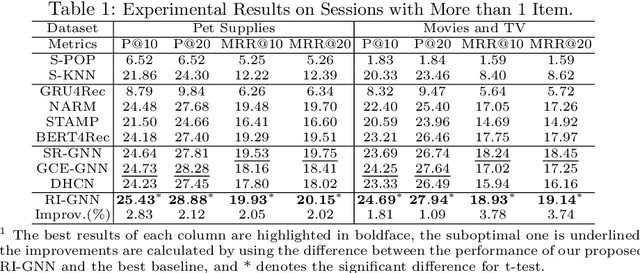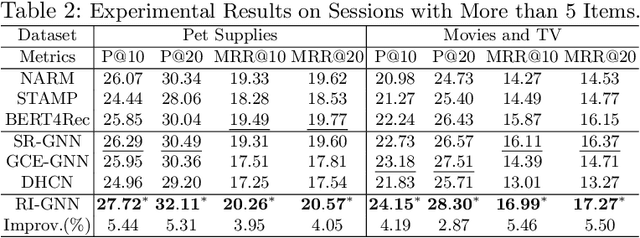Chong Feng
DocMEdit: Towards Document-Level Model Editing
May 26, 2025Abstract:Model editing aims to correct errors and outdated knowledge in the Large language models (LLMs) with minimal cost. Prior research has proposed a variety of datasets to assess the effectiveness of these model editing methods. However, most existing datasets only require models to output short phrases or sentences, overlooks the widespread existence of document-level tasks in the real world, raising doubts about their practical usability. Aimed at addressing this limitation and promoting the application of model editing in real-world scenarios, we propose the task of document-level model editing. To tackle such challenges and enhance model capabilities in practical settings, we introduce \benchmarkname, a dataset focused on document-level model editing, characterized by document-level inputs and outputs, extrapolative, and multiple facts within a single edit. We propose a series of evaluation metrics and experiments. The results show that the difficulties in document-level model editing pose challenges for existing model editing methods.
Aligning Attention Distribution to Information Flow for Hallucination Mitigation in Large Vision-Language Models
May 20, 2025Abstract:Due to the unidirectional masking mechanism, Decoder-Only models propagate information from left to right. LVLMs (Large Vision-Language Models) follow the same architecture, with visual information gradually integrated into semantic representations during forward propagation. Through systematic analysis, we observe that over 80\% of the visual information is absorbed into the semantic representations. However, the model's attention still predominantly focuses on the visual representations. This misalignment between the attention distribution and the actual information flow undermines the model's visual understanding ability and contributes to hallucinations. To address this issue, we enhance the model's visual understanding by leveraging the core information embedded in semantic representations. Specifically, we identify attention heads that focus on core semantic representations based on their attention distributions. Then, through a two-stage optimization paradigm, we propagate the advantages of these attention heads across the entire model, aligning the attention distribution with the actual information flow. We evaluate our method on three image captioning benchmarks using five different LVLMs, demonstrating its effectiveness in significantly reducing hallucinations. Further experiments reveal a trade-off between reduced hallucinations and richer details. Notably, our method allows for manual adjustment of the model's conservativeness, enabling flexible control to meet diverse real-world requirements. Code will be released once accepted.
Mitigate Language Priors in Large Vision-Language Models by Cross-Images Contrastive Decoding
May 19, 2025Abstract:Language priors are a major cause of hallucinations in Large Vision-Language Models (LVLMs), often leading to text that is linguistically plausible but visually inconsistent. Recent work explores contrastive decoding as a training-free solution, but these methods typically construct negative visual contexts from the original image, resulting in visual information loss and distorted distribution. Motivated by the observation that language priors stem from the LLM backbone and remain consistent across images, we propose Cross-Images Contrastive Decoding (CICD), a simple yet effective training-free method that uses different images to construct negative visual contexts. We further analyze the cross-image behavior of language priors and introduce a distinction between essential priors (supporting fluency) and detrimental priors (causing hallucinations), enabling selective suppression. By selectively preserving essential priors and suppressing detrimental ones, our method reduces hallucinations while maintaining coherent and fluent language generation. Experiments on four benchmarks and six LVLMs across three model families confirm the effectiveness and generalizability of CICD, especially in image captioning, where language priors are particularly pronounced. Code will be released upon acceptance.
METEOR: Evolutionary Journey of Large Language Models from Guidance to Self-Growth
Nov 18, 2024Abstract:Model evolution enables learning from feedback to refine experiences and update skills, transforming models from having no domain knowledge to becoming domain experts. However, there is currently no unified and effective method for guiding this evolutionary process. To address this gap, we propose the Meteor method, which includes three training phases: weak-to-strong data distillation, iterative training, and self-evolution strategies. Each phase maximizes the model's inherent domain capabilities, allowing it to autonomously refine its domain knowledge and enhance performance. Experiments demonstrate that our approach significantly improves accuracy, completeness, relevance, coherence, and reliability across domain-specific tasks.
PSPO*: An Effective Process-supervised Policy Optimization for Reasoning Alignment
Nov 18, 2024



Abstract:Process supervision enhances the performance of large language models in reasoning tasks by providing feedback at each step of chain-of-thought reasoning. However, due to the lack of effective process supervision methods, even advanced large language models are prone to logical errors and redundant reasoning. We claim that the effectiveness of process supervision significantly depends on both the accuracy and the length of reasoning chains. Moreover, we identify that these factors exhibit a nonlinear relationship with the overall reward score of the reasoning process. Inspired by these insights, we propose a novel process supervision paradigm, PSPO*, which systematically outlines the workflow from reward model training to policy optimization, and highlights the importance of nonlinear rewards in process supervision. Based on PSPO*, we develop the PSPO-WRS, which considers the number of reasoning steps in determining reward scores and utilizes an adjusted Weibull distribution for nonlinear reward shaping. Experimental results on six mathematical reasoning datasets demonstrate that PSPO-WRS consistently outperforms current mainstream models.
QRMeM: Unleash the Length Limitation through Question then Reflection Memory Mechanism
Jun 19, 2024Abstract:While large language models (LLMs) have made notable advancements in natural language processing, they continue to struggle with processing extensive text. Memory mechanism offers a flexible solution for managing long contexts, utilizing techniques such as compression, summarization, and structuring to facilitate nuanced and efficient handling of large volumes of text. However, existing techniques face challenges with static knowledge integration, leading to insufficient adaptation to task-specific needs and missing multi-segmentation relationships, which hinders the dynamic reorganization and logical combination of relevant segments during the response process. To address these issues, we introduce a novel strategy, Question then Reflection Memory Mechanism (QRMeM), incorporating a dual-structured memory pool. This pool synergizes static textual content with structured graph guidance, fostering a reflective trial-and-error approach for navigating and identifying relevant segments. Our evaluation across multiple-choice questions (MCQ) and multi-document question answering (Multi-doc QA) benchmarks showcases QRMeM enhanced performance compared to existing approaches.
RAAMove: A Corpus for Analyzing Moves in Research Article Abstracts
Mar 23, 2024Abstract:Move structures have been studied in English for Specific Purposes (ESP) and English for Academic Purposes (EAP) for decades. However, there are few move annotation corpora for Research Article (RA) abstracts. In this paper, we introduce RAAMove, a comprehensive multi-domain corpus dedicated to the annotation of move structures in RA abstracts. The primary objective of RAAMove is to facilitate move analysis and automatic move identification. This paper provides a thorough discussion of the corpus construction process, including the scheme, data collection, annotation guidelines, and annotation procedures. The corpus is constructed through two stages: initially, expert annotators manually annotate high-quality data; subsequently, based on the human-annotated data, a BERT-based model is employed for automatic annotation with the help of experts' modification. The result is a large-scale and high-quality corpus comprising 33,988 annotated instances. We also conduct preliminary move identification experiments using the BERT-based model to verify the effectiveness of the proposed corpus and model. The annotated corpus is available for academic research purposes and can serve as essential resources for move analysis, English language teaching and writing, as well as move/discourse-related tasks in Natural Language Processing (NLP).
Boosting Event Extraction with Denoised Structure-to-Text Augmentation
May 16, 2023Abstract:Event extraction aims to recognize pre-defined event triggers and arguments from texts, which suffer from the lack of high-quality annotations. In most NLP applications, involving a large scale of synthetic training data is a practical and effective approach to alleviate the problem of data scarcity. However, when applying to the task of event extraction, recent data augmentation methods often neglect the problem of grammatical incorrectness, structure misalignment, and semantic drifting, leading to unsatisfactory performances. In order to solve these problems, we propose a denoised structure-to-text augmentation framework for event extraction DAEE, which generates additional training data through the knowledge-based structure-to-text generation model and selects the effective subset from the generated data iteratively with a deep reinforcement learning agent. Experimental results on several datasets demonstrate that the proposed method generates more diverse text representations for event extraction and achieves comparable results with the state-of-the-art.
Location-based Twitter Filtering for the Creation of Low-Resource Language Datasets in Indonesian Local Languages
Jun 15, 2022



Abstract:Twitter contains an abundance of linguistic data from the real world. We examine Twitter for user-generated content in low-resource languages such as local Indonesian. For NLP to work in Indonesian, it must consider local dialects, geographic context, and regional culture influence Indonesian languages. This paper identifies the problems we faced when constructing a Local Indonesian NLP dataset. Furthermore, we are developing a framework for creating, collecting, and classifying Local Indonesian datasets for NLP. Using twitter's geolocation tool for automatic annotating.
Rethinking Adjacent Dependency in Session-based Recommendations
Jan 29, 2022



Abstract:Session-based recommendations (SBRs) recommend the next item for an anonymous user by modeling the dependencies between items in a session. Benefiting from the superiority of graph neural networks (GNN) in learning complex dependencies, GNN-based SBRs have become the main stream of SBRs in recent years. Most GNN-based SBRs are based on a strong assumption of adjacent dependency, which means any two adjacent items in a session are necessarily dependent here. However, based on our observation, the adjacency does not necessarily indicate dependency due to the uncertainty and complexity of user behaviours. Therefore, the aforementioned assumption does not always hold in the real-world cases and thus easily leads to two deficiencies: (1) the introduction of false dependencies between items which are adjacent in a session but are not really dependent, and (2) the missing of true dependencies between items which are not adjacent but are actually dependent. Such deficiencies significantly downgrade accurate dependency learning and thus reduce the recommendation performance. Aiming to address these deficiencies, we propose a novel review-refined inter-item graph neural network (RI-GNN), which utilizes the topic information extracted from items' reviews to refine dependencies between items. Experiments on two public real-world datasets demonstrate that RI-GNN outperforms the state-of-the-art methods.
 Add to Chrome
Add to Chrome Add to Firefox
Add to Firefox Add to Edge
Add to Edge